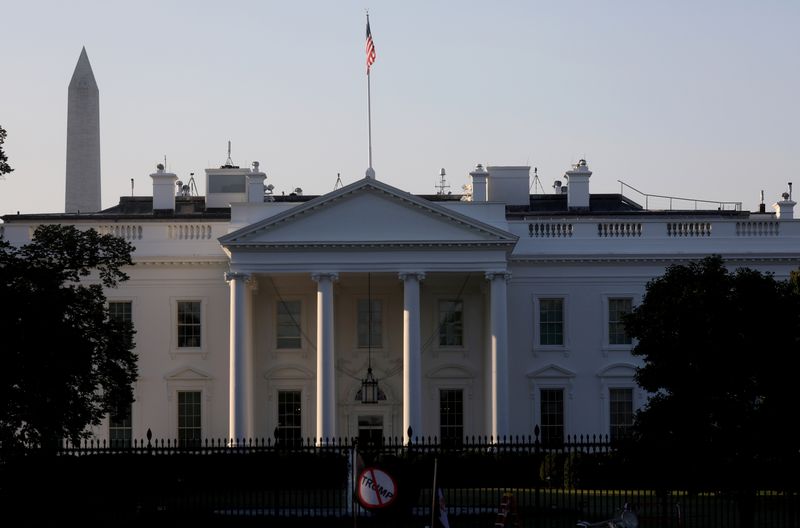By Brad Heath
(Reuters) - The combination of the coronavirus pandemic and President Donald Trump's accusations of mass voter fraud by Democrats has legal experts warning of the possibility of a contested presidential election.
Americans have selected a president 58 times. Four times, an inconclusive or disputed result tested the legal underpinnings of U.S. democracy.
1800: House votes 36 times to break a tie
The fourth U.S. presidential election ended in a tie, with Thomas Jefferson and Aaron Burr each receiving 73 electoral votes.
In that case, the U.S. Constitution leaves it to the House of Representatives to select the next president. Each state delegation gets a single vote in the so-called "contingent election."
But when legislators began voting in February, 1801, neither Jefferson nor Burr was able to win the support of more than eight of the 16 states that existed at the time.
House members voted 35 times over a week, and each time Jefferson came up with eight votes, failing to win the needed majority. On the 36th try, Jefferson won 10 states and the House awarded him the presidency.
Burr, as the runner-up, became his vice president, under the rules at the time.
1824: Contingent election
Andrew Jackson won both the popular vote and the most votes in the Electoral College among four presidential candidates, but did not receive the majority of 131 electoral votes required to win. The outcome led to a vote in the House of Representatives, which elected John Quincy Adams as president.
1876: Dueling electors
The most contentious and controversial presidential election in American history was arguably the 1876 contest between Republican Rutherford B. Hayes and Democrat Samuel J. Tilden.
In Southern states, the voting was marred by threats of violence from Democrats who aimed to keep black voters away from the polls. The Democrats also created ballots that carried pictures of famous Republican Abraham Lincoln to try to trick illiterate voters into choosing Tilden.
At the end of the tumultous campaign, competing political camps in three states each sent two different slates of electors - one for Tilden, the other for Hayes - to Congress.
The dueling slates from Florida, Louisiana and South Carolina arrived with varying degrees of authority; the Republican slate from Louisiana supporting Hayes was sent by the state’s governor while the Democratic slate backing Tilden was sent by that party’s gubernatorial candidate.
The election hinged on the disputed states. If their Republican electoral votes were counted, Hayes would be president. If the Democratic slates were counted, Tilden would be elected.
Since Congress then had no existing procedures to decide which of the disputed returns should be counted, it created a 15-member commission to settle the dispute, with five members each drawn from the House, the Senate and the Supreme Court. That commission ultimately voted 8-7 along partisan lines to award each of the disputed electoral votes to Hayes, giving him the presidency.
Democrats accepted the result only after Republicans agreed to withdraw U.S. troops left over from the Civil War from Southern states. The compromise helped usher in the so-called “Jim Crow” era of legalized racial segregation and discimination that would last another century.
A decade later, Congress enacted the Electoral Count Act that was meant to establish a roadmap for resolving disputed elections in the future, though exactly how it would work remains unclear because of ambiguities in the language, election scholars say. The law has never been tested or intepreted by the courts.
2000: The Florida recount
The most recent contested presidential election was the race between Republican George W. Bush and then-Vice President Al Gore, a Democrat. By the end of Election Day, it was clear that contest would be decided by Florida’s 25 electoral votes.
As the polls closed in Florida, television networks declared that Gore had won the state handily. But as vote-counting went on into the night, they reversed themselves as Bush’s tally increased. By morning, the state’s count had Bush leading Gore by only a few thousand votes.
Gore’s campaign asked officials in four of Florida’s biggest counties to recount their ballots by hand, kicking off a weeks-long process of inspecting punch-card ballots. Three weeks after the election, Florida declared that Bush had won by 537 votes.
Gore contested that count, and the state’s highest court ordered a recount of thousands of ballots that had been rejected by counting machines because they were incompletely punched - leaving "hanging chads," little pieces of paper clinging to the ballot.
The U.S. Supreme Court effectively halted that count on Dec. 12, six days before the Electoral College was to meet, ruling that the constitution had been violated by different counting standards being used in different counties.
Republican lawmakers in the Florida legislature were on the verge of selecting a slate of electors that would back Bush over Gore when the U.S. Supreme Court stopped the recount. The court decision prompted Gore to concede the election, saying he wanted to spare the country further partisan infighting.
